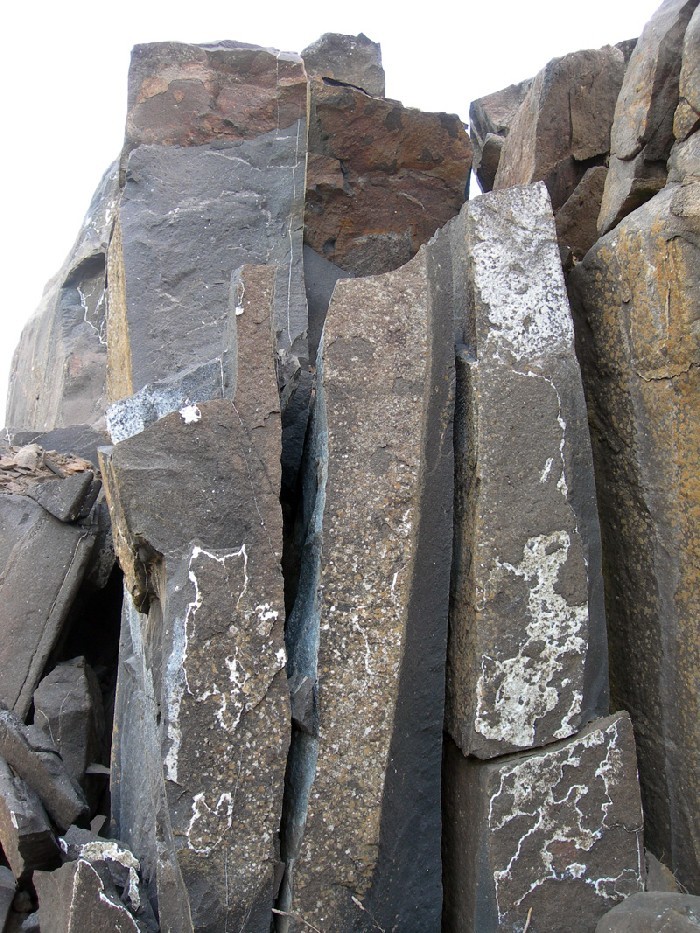Zeolites of Lomba dos Pianos, Portugal
Last Updated: 14th Jan 2015By Rui Nunes
Zeolites of Lomba dos Pianos, Portugal
With backs turned to earth, we just have the vastness of the sea in front... sometimes the gulls fly below our feet.
It's a beautiful and amazing place!
Lomba dos Pianos is located between the Samarra beach, in the small locality of Assafora - small beach where the sand does not go beyond 50 meters - and Magoito beach, a reasonable extension of sand with a consolidated dune considered one of the most interesting geological elements of the region. It is a coastal dune formed by the accumulation of sand generated by the combined action of the sea and wind. This corresponds to a fossil dune stage of evolution of soft sand to sandstone rock, a process that takes millions of years. The consolidated dune of Magoito was formed about 10,000 years ago.
The name of Lomba dos Pianos disjunction is due to the prismatic basalt formation that is particularly evident here, reminiscent of organ pipes of some churches. The columns are arranged perpendicular to the cooling surface, which in this case correspond to the sill limits.
This volcanic outcrop consists of basalt / dolerite - intrusive rocks of the Volcanic Complex of Lisbon (terminal Cretaceous) - arranged in layers concordant with the sedimentary strata of limestone and marl overlying the Upper Cretaceous. This vein accompanying the sedimentary layers is about 3 km long and can go up to 20 meters thick. This rock is formed about 72 million years ago when magma emerged through the limestone rocks that existed in this region during the magmatic episode, which led to the formation of the Volcanic Complex of Lisbon.
Lomba dos Pianos is a sill of basaltic composition, with small crystals barely visible to the naked eye. However, in the black matrix, stand out a few larger amphibole and pyroxene crystals. In the rock fractures can be observed white to pink zeolites with a radial fibrous aspect. Globular structures can be identified with natrolite and thomsonite. It’s even harder to find cavities where capillary globules arise on analcime and calcite. There are also references to specimens with stilbite, heulandite and stellerite.
In addition to the prismatic disjunction clearly perpendicular to the cooling surface (the sill limits), there is also spheroidal disjunction that causes scaling of the dolerite - the origin of this erosive phenomenon is in the presence of nearly perpendicular fractures that are preferred sites for water movement with the consequent rock alteration. It is determined as well as portions of rock roughly spherical in the outer core and an altered and relatively more "healthy".
Whenever I visit the Lomba of Pianos it’s like the first time... My first zeolites are from Lomba dos Pianos; I even think that my the best Portuguese zeolites were collected here.
Article has been viewed at least 14868 times.


































